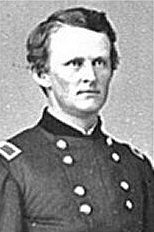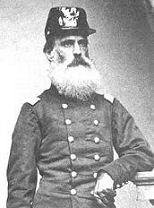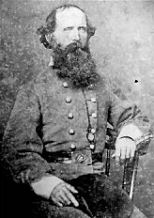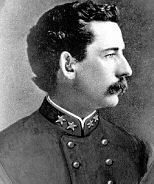 |
General Wesley Merritt's command (consisting of the 1st, 2nd, 5th and 6th U.S. Regular Cavalry regiments, and one volunteer regiment, the 6th Pennsylvania Volunteer Cavalry, also known as Rush's Lancers) was moving from Emmitsburg to Gettysburg when a local resident notified Merritt that Confederate Wagons were assembling near Fairfield. He then ordered the 6th U.S. Cavalry under Major Samuel H. Starr to scout the area in Fairfield and to find the wagon train |
|
 |
Major Samuel H. Starr in command of the 6th U.S. Regular Cavalry traveled to Fairfield and learned that a wagon train had just rolled out of town and was heading to Cashtown. He divided his 400 men and began to search for the wagon train |
|
 |
General William E. ōGrumbleö JonesÆ Brigade consisting of the 6th, 7th, 11th Cavalry Regiments, about 1500 men and ChewÆs Battery were in Cashtown where General Jones received an order from General Lee. The order stated that there needed to be a force of Cavalry to form a battle line near Fairfield. Complying with General LeeÆs request, General Jones traveled the road leading from Cashtown to Fairfield |
|
 |
Capt. Roger Preston ChewÆs Battery, armed with an imported British Blakely rifled cannon, a 12-pounder smoothbore and a 3-inch iron rifle, became the first of several horse artillery batteries organized and employed by Confederate cavalry commanders. By the time the war ended, ChewÆs Battery enjoyed a reputation for valor second to no other battery in Confederate service |